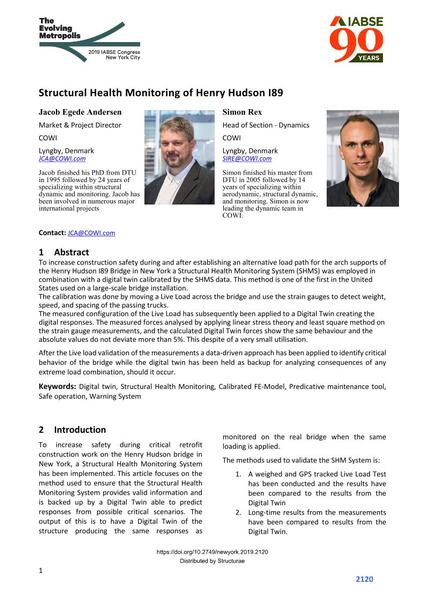Structural Health Monitoring of Henry Hudson I89

|
|
|||||||||||
Bibliografische Angaben
| Autor(en): |
Jacob Egede Andersen
(COWI)
Simon Rex (COWI) |
||||
|---|---|---|---|---|---|
| Medium: | Tagungsbeitrag | ||||
| Sprache(n): | Englisch | ||||
| Tagung: | IABSE Congress: The Evolving Metropolis, New York, NY, USA, 4-6 September 2019 | ||||
| Veröffentlicht in: | The Evolving Metropolis | ||||
|
|||||
| Seite(n): | 2120-2130 | ||||
| Anzahl der Seiten (im PDF): | 11 | ||||
| DOI: | 10.2749/newyork.2019.2120 | ||||
| Abstrakt: |
To increase construction safety during and after establishing an alternative load path for the arch supports of the Henry Hudson I89 Bridge in New York a Structural Health Monitoring System (SHMS) was employed in combination with a digital twin calibrated by the SHMS data. This method is one of the first in the United States used on a large-scale bridge installation. The calibration was done by moving a Live Load across the bridge and use the strain gauges to detect weight, speed, and spacing of the passing trucks. The measured configuration of the Live Load has subsequently been applied to a Digital Twin creating the digital responses. The measured forces analysed by applying linear stress theory and least square method on the strain gauge measurements, and the calculated Digital Twin forces show the same behaviour and the absolute values do not deviate more than 5%. This despite of a very small utilisation. After the Live load validation of the measurements a data-driven approach has been applied to identify critical behavior of the bridge while the digital twin has been held as backup for analyzing consequences of any extreme load combination, should it occur. |
||||
